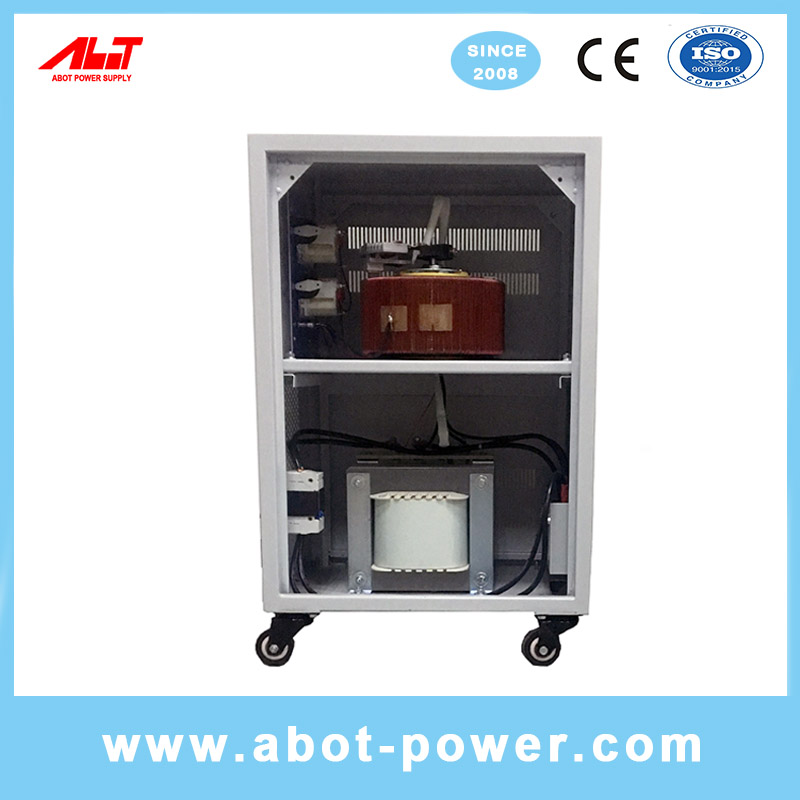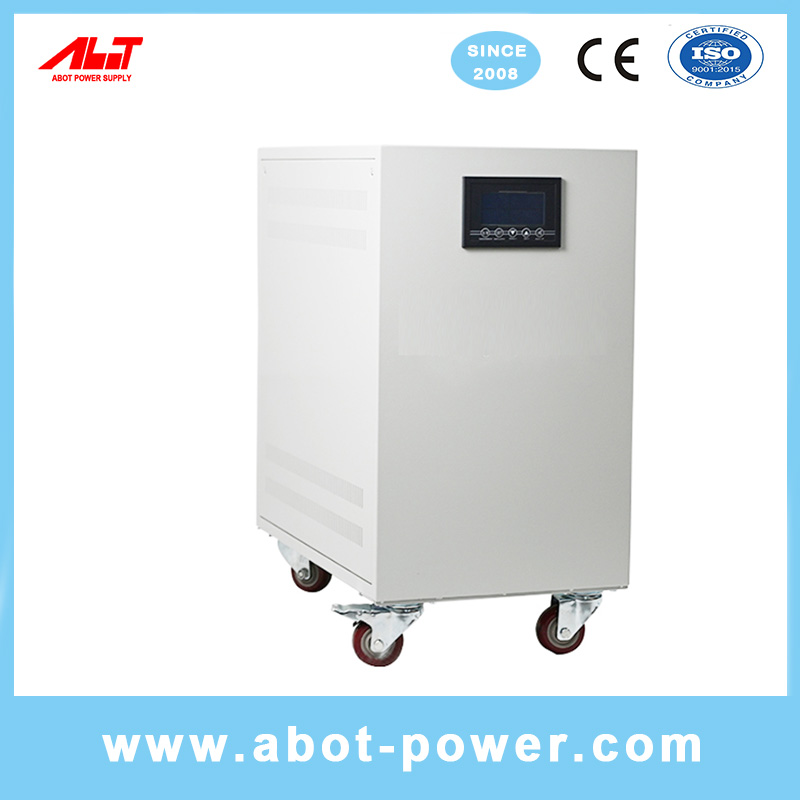The single-phase voltage stabilizer is composed of a contact auto-coupling voltage regulator, a drive rectifier circuit, an automatic control circuit, etc.
The working principle is: when the grid voltage is unstable or the load changes, the automatic sampling control circuit sends out a signal and drives the drive circuit, adjusts the position of the auto-voltage regulator driver, and adjusts the output voltage to the rated value and reaches a stable state with overvoltage, Under-voltage, overload, bypass, lightning protection and other protection functions and waveforms are not distorted, reliable performance, and long-term operation. It can ensure the normal operation of electrical equipment. Widely used in any place where electricity is used, it is an ideal regulated power supply.
The voltage regulator is composed of a voltage regulator circuit, a control circuit, and a drive circuit. When the input voltage or load changes, the control circuit samples, compares, and amplifies, and then drives the drive circuit to rotate to change the position of the voltage regulator driver. Automatically adjust the coil turns ratio to keep the output voltage stable. The voltage regulator with larger capacity also works on the principle of voltage compensation.
It is equivalent to an electric voltage regulator. When the voltage is high, it will automatically adjust the voltage down, and when the voltage is low, it will automatically increase the voltage.
1. The main principle analysis of single-phase AC voltage stabilizer
In fact, this type of voltage regulator directly regulated by a voltage regulator is made using the principle of an autotransformer. If the input voltage is higher than the output set point 220V, the autotransformer will work in the step-down state, if the input voltage is lower than 220V, the autotransformer will work in the step-up state.
This kind of voltage stabilizer is different from the autotransformer mainly in that the input point can slide arbitrarily from 0V to 250V. In this way, the input point of the input voltage can be adjusted at any time to meet the constant output voltage.
The sampling circuit of the voltage stabilizer constantly monitors the voltage between the two points of the output of the voltage stabilizer. When the output voltage rises, it controls the motor to move toward the autotransformer step-down direction. When the output voltage reaches the desired voltage, it stops controlling the motor movement. On the contrary, the control circuit controls the motor to rotate in the direction of boosting the autotransformer. Stop when the required voltage is reached.
The capacity of this type of voltage stabilizer is entirely borne by the autotransformer whose output voltage can be a transformer, but due to the influence of its manufacturing process, it cannot be made very large and can only be adapted to small power occasions. In order to increase the power of the voltage stabilizer, it is necessary to add a compensation transformer to realize the power expansion of the voltage stabilizer.

2. How does the voltage regulator ensure continuous output
In the process of voltage regulation, the voltage regulator is realized by moving the driver to change the number of coil turns in contact. Then, it is required to always keep in contact with the coil during adjustment. Otherwise, there will be a power failure.
How does the voltage regulator maintain continuous output?
The drive must ensure a certain thickness.
When the driver has not completely removed the turn of the coil that has been in contact, the driver has touched another turn of the coil.
Two turns must be bridged during movement (at least two turns)
There is always an inter-turn short-circuit phenomenon during the operation of the voltage regulator. The thicker the driver, the more short-circuit turns. Therefore, the thickness of the voltage regulator driver is different according to the voltage regulator wire diameter.


